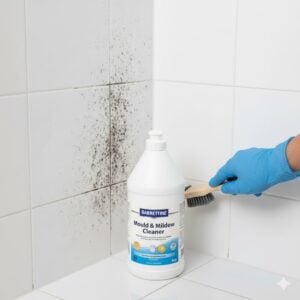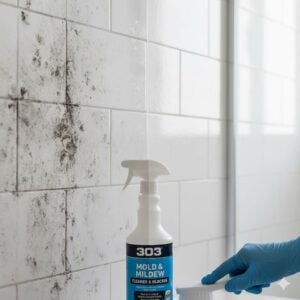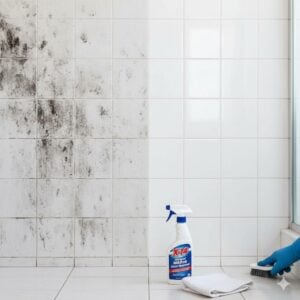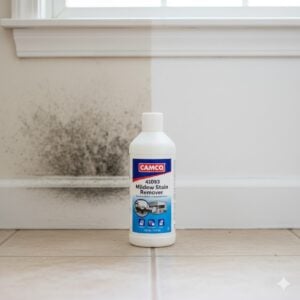A leaking ceiling is one of the most stressful problems any homeowner or tenant in the UAE can face. It doesn’t just create an eyesore—it can damage property, affect health, and even weaken the structure of your home if ignored. Because of the region’s unique conditions, such as heavy use of air conditioning, sudden rainfall, and high humidity, ceiling leaks are more common than many people expect. Understanding why a ceiling leak happens, what it means for your home, and how to handle it step by step can save you from expensive repairs and serious risks.
Table of Contents
ToggleWhy Does a Ceiling Start Leaking?

There are many reasons a ceiling might start to leak, and most of them are linked to water intrusion from above. In apartments or villas, water often travels from one level to another, making it harder to trace. The most common culprit is plumbing. A small pipe leak above the ceiling can drip slowly for weeks before you notice the stain or dampness. Another cause is roof damage, especially during seasonal rains in the UAE when flat roofs collect water and tiny cracks let moisture seep inside. Air conditioning systems are also a major source of leaks. Condensate drain lines sometimes clog, causing water to overflow into the ceiling. Even poorly sealed bathrooms or kitchens above your living space can allow water to escape and travel downwards into the ceiling below.
Early Signs of a Leaking Ceiling
A ceiling leak often begins subtly, so it’s important to recognize the warning signs before the damage spreads. One of the first clues is discoloration. Yellow or brown stains appearing in irregular patches usually mean water has seeped into the plaster or drywall. You may also notice the paint starting to bubble, peel, or crack. In some cases, the ceiling surface feels damp or soft when touched. A musty smell in the room is another common indicator, showing that moisture has been trapped long enough for mold to start forming. If you hear a dripping sound at night when the house is quiet, that could be water accumulating above and finding its way through. Spotting these early symptoms and acting fast can make the difference between a minor repair and a major renovation.
Why a Leaking Ceiling Should Never Be Ignored
Many people put off fixing ceiling leaks because they seem minor at first. But even a slow drip has serious consequences if left untreated. Moisture trapped in ceilings weakens building materials, leading to sagging plaster, damaged insulation, and eventually collapsed sections. Mold growth is another danger. Mold thrives in damp, dark environments, and a leaky ceiling provides the perfect breeding ground. Inhaling mold spores can cause respiratory problems, allergies, and worsen asthma. Electrical hazards are also a concern, as water may seep near lighting fixtures or wiring hidden in the ceiling. Beyond health and safety, ignoring the problem also means higher costs later. What could have been a simple pipe repair can quickly escalate into full ceiling replacement, repainting, and mold remediation.
How to Respond Immediately When You See a Leak
The first step when you notice water coming through the ceiling is to minimize the damage. Move furniture, electronics, and valuables out of the affected area to keep them safe. Place a bucket or container directly under the leak to catch water and prevent floor damage. If the ceiling bulges with water, it’s sometimes safer to carefully release the pressure by making a small puncture and allowing the water to drain into a bucket, rather than waiting for it to burst unexpectedly. After containing the leak, turn off water supplies if you suspect plumbing is involved, or switch off the AC if the unit is dripping. At the same time, it’s important to contact professional help quickly. A leak is rarely something you can fix permanently on your own because the source is often hidden behind walls or above ceilings.
Professional Help for Leaking Ceilings
Professional services in the UAE are equipped with tools to diagnose the exact cause of a ceiling leak. Plumbers can perform pressure tests to check for broken pipes. Roof specialists inspect waterproofing layers on flat roofs and terraces. AC technicians examine drainage lines, pans, and coils to find blockages or cracks. Once the source is identified, the repair usually involves both stopping the leak and fixing the visible damage. This may mean replacing a pipe, re-sealing a roof area, or cleaning AC drain lines. Afterward, the ceiling itself must be dried, repaired, and repainted. Professionals also check for mold and apply safe treatments to prevent regrowth. While hiring experts may seem costly at first, it saves you from repeat leaks and more severe damage in the long term.
Prevention Tips to Avoid Future Ceiling Leaks
Preventing leaks is always easier than dealing with them later. Regular maintenance plays a big role. Have your air conditioning system serviced at least twice a year to make sure the condensate drain lines are clear. Inspect your roof after heavy rain, looking for pooling water or cracked sealant. In multi-story buildings, check bathroom seals, especially around tubs and showers, since even small gaps allow water to seep through floors. Repainting ceilings with waterproof coatings can also provide extra protection in humid environments. If you rent a property, report small leaks immediately to landlords or building management before they get worse. By staying proactive, you can protect your home, your health, and your budget.
Living with Confidence After a Leak
Although a leaking ceiling can feel overwhelming, it’s a problem that can be managed with the right approach. By acting quickly, calling professionals, and adopting preventive habits, you can restore your home and stop future issues before they start. Living in the UAE means adapting to a hot and humid climate, but with awareness and good maintenance, ceiling leaks don’t have to be a recurring nightmare. Think of every step you take—whether it’s scheduling AC servicing, inspecting your roof, or simply noticing the first stain—as an investment in your safety and comfort. Us and you together can ensure your home remains strong, fresh, and welcoming, no matter the season.













